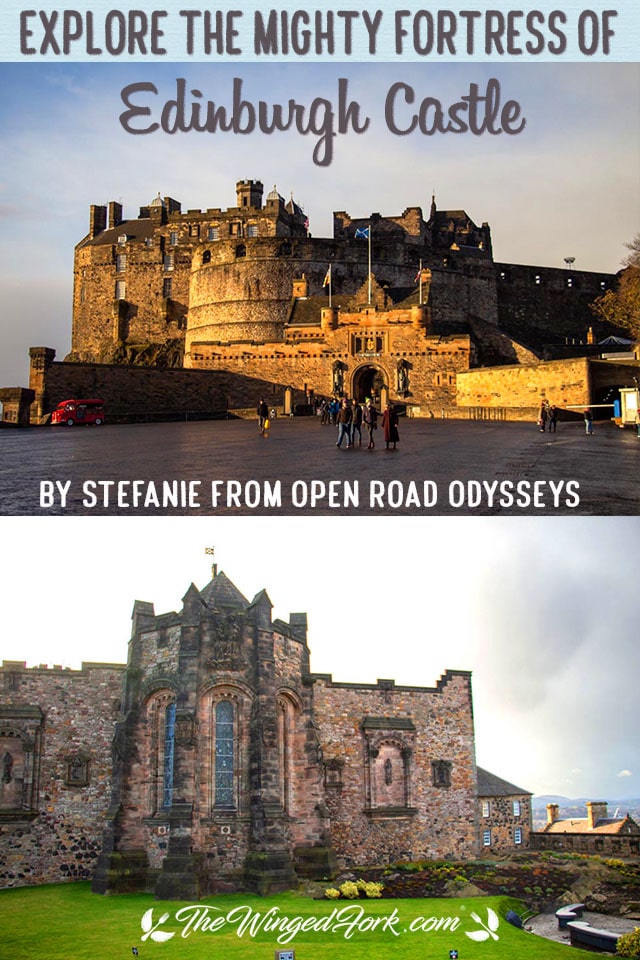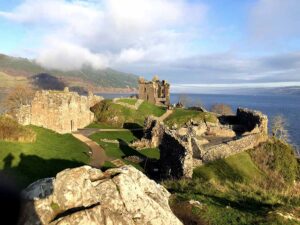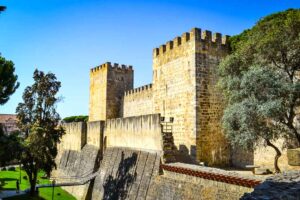Perched on an ancient, extinct volcano called Castle Rock, Edinburgh Castle dominates the skyline of the Old Town of Edinburgh. You can see the impressive complex from almost anywhere in the city. It’s the most famous and most-visited attraction in Edinburgh and is absolutely worth visiting on any trip to Scotland.
History of Edinburgh Castle
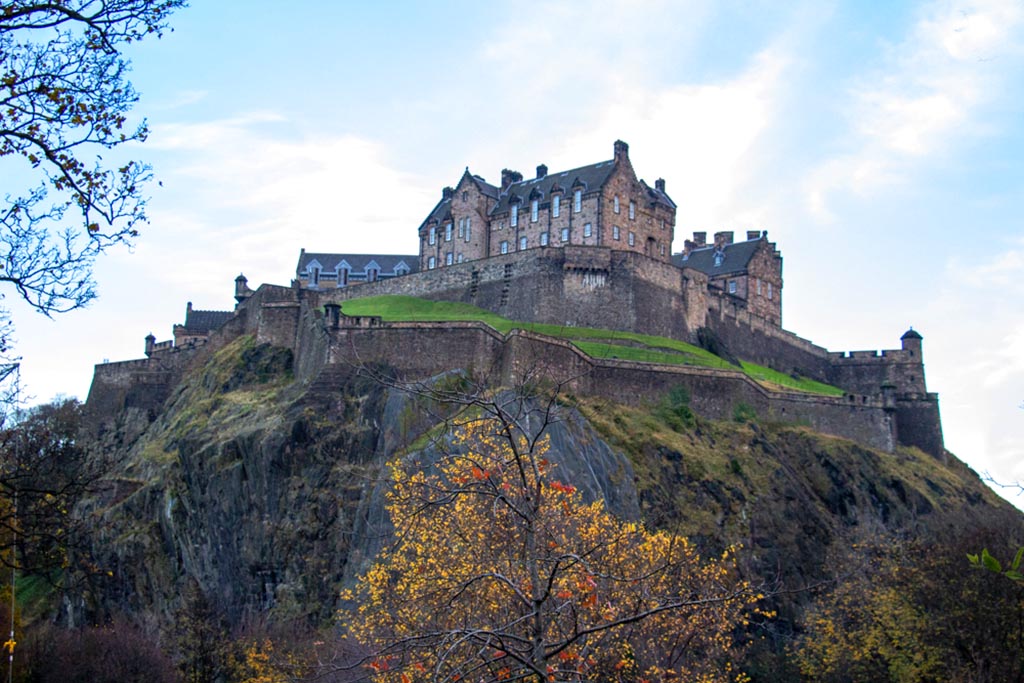
No one knows exactly how long ago Castle Rock was first used for military purposes, but early writings mention people from the Iron Age building a fort upon the hill. It changed hands several times over the ages until the Angles took it from the Romans in AD 638 and the area became known by its current name, Edinburgh.
Edinburgh Castle became an official castle for the royal family in the middle ages. It housed the sheriff of the town as well as military troops and the crown jewels.
In the 12th century, King David I began building some of the current structures of the castle, including St. Margaret’s Chapel, the oldest standing building in Edinburgh.
Over the years, Edinburgh Castle has been through many sieges and has changed hands many times. In fact, it’s the most besieged place in Britain. During the Wars of Scottish Independence, Edward I was the first to take the castle from the Scots in 1296.
Not long after that, the Scots, led by Robert the Bruce’s nephew Thomas Randolph, famously retook the castle in 1314 with only 30 men under the cover of darkness.
After the wars, the castle had to be rebuilt. David’s Tower was constructed in 1370 by Robert the Bruce’s son, David II. It was a tall structure for its time, 3 stories tall and served as the entrance to the castle and a barrier for any future attacks. It was destroyed during the Lang Siege and became the current site of the Half Moon Battery.
Edinburgh Castle was a key location in the history of Mary, Queen of Scots. The Honours of Scotland, which consist of a crown, sceptre and sword of state, are the oldest crown jewels in Britain.
They were first used in the coronation of Mary, Queen of Scots in 1543. Mary also gave birth to her son, James VI at the castle. He became king at just 13 months old which united England and Scotland in 1603.

After this event, the castle was rarely used as a residence by the monarchy, so it became a military base. After the Jacobite uprisings in the early 1700s, which almost saw the castle captured again, the property was refortified and strengthened with the addition of new gun batteries and also barracks to house more soldiers.
However, the castle never saw any significant action since the Jacobite uprisings. It did hold hundreds of prisoners of war from 1757 to 1814, starting with French privateers during the Seven Years War and including some during the Napoleonic Wars.
Today, the castle still serves as a military station and a must-visit attraction on your Scottish road trip. It also houses the Scottish National War Memorial, the National War Museum, and the Honours of Scotland. In August, it also hosts the famous Royal Edinburgh Military Tattoo.
Things to see at Edinburgh Castle
There are so many things to see and explore on a visit to Edinburgh Castle. While you could easily spend a whole day exploring everything this place has to offer, here are the highlights you shouldn’t miss.
1. The Great Hall

The Great Hall was built in 1511 by King James IV. It hosted banquets and state events. When the castle was captured by Oliver Cromwell in 1650, it was used as military barracks. It also functioned as a military hospital.
Today, it has been restored to its original glory and houses armor and weaponry that would have been used during its military history.
2. The Royal Palace

The rooms of the current Royal Palace were mainly constructed by King James IV in the early 1500s. There were both births and deaths that took place here. King Charles I was the last monarch to stay at the castle, which was in June 1633 right before his coronation.
3. The Stone of Destiny
The Stone of Destiny is a fascinating artifact. Its origins are actually unknown. It has been used for centuries in the inauguration of the monarchs in Scotland, and then later on England and Great Britain. Today, it only leaves the castle for coronations in Westminster Abbey.
4. Honours of Scotland
The Honours of Scotland, along with the Stone of Destiny, are on display in the Crown Room at Edinburgh Castle. The crown, sceptre, and sword of state are made of gold, silver, and gems. While the crown was made for James V, who wore it for Queen Mary of Guise’s coronation, the crown and sceptre were first used together during the coronation of Mary, Queen of Scots.
5. St Margaret’s Chapel

St Margaret’s Chapel is the oldest building in Edinburgh. King David I built the chapel in honor of his mother, Queen Margaret. The chapel still hosts weddings and christenings to this day, and it is open for all castle visitors to enjoy.
6. Mons Meg

In its day, Mons Meg was cutting-edge technology. The cannon weighed 6 tons, and it could fire a 150kg gunstone up to 2 miles (3.2km). The gun was used in several battles, including the siege of Roxburgh Castle, Dumbarton Castle, and then Norham Castle. It spent some time in James V’s navy and was finally retired around 1550.
When Mary Queen of Scots married, Mons Meg fired a shot over the city. The barrel of the gun finally burst in 1681. It was returned to the castle in 1829 after spending over 75 years in England.
7. Half Moon Battery
Half Moon Battery once housed cannons that were used to defend the castle. They were known as the Seven Sisters and were casted around 1500 during the reign of James IV. The current guns were made in 1810 for the Napoleonic Wars.
8. National War Museum

The National War Museum is home to hundreds of items that were part of Scottish war history over the years. The museum was opened in 1933. Prior to that, the building that houses the artifacts today was used as a storehouse and then a military hospital.
9. Scottish National War Memorial
The Scottish National War Memorial honors the Scottish who died in World War I and II.
10. The Queen’s Embroideries

The Queen’s Embroideries on display in Edinburgh Castle are replicas of the same needlework that Mary Queen of Scots completed when she was exiled in England. There are 37 pictures, each that tells a story, including legends, mythology, and natural history.
Why you should visit Edinburgh Castle
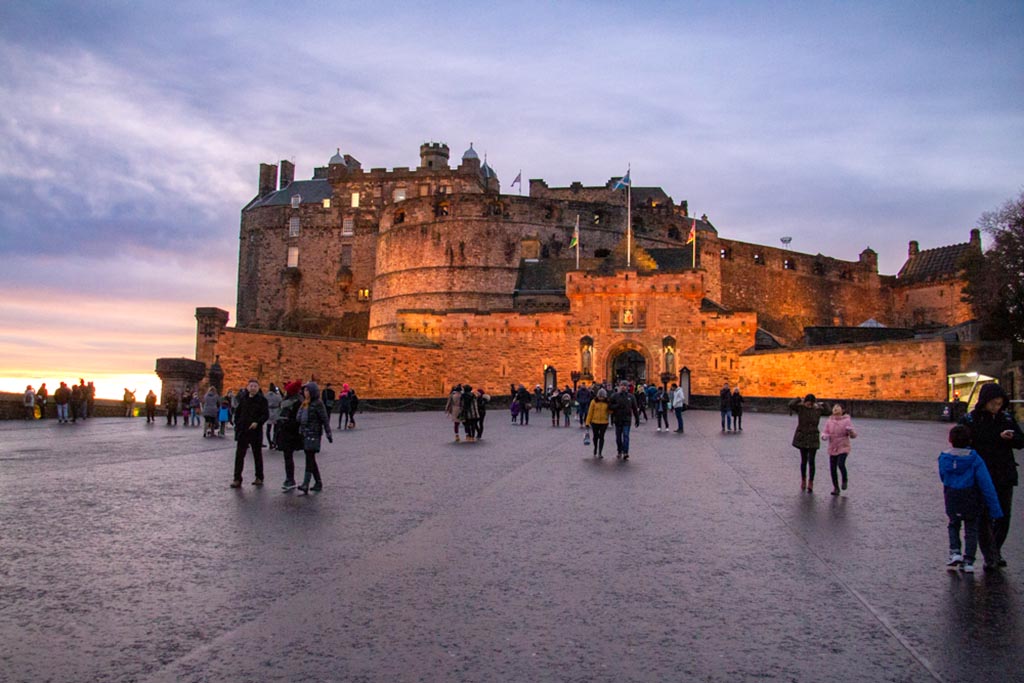
Any visit to Scotland should include a trip to Edinburgh Castle. Besides being the most prominent building in the entire city of Edinburgh, it has a vast and fascinating history. It also houses some incredibly symbolic items from Scotland’s history.
Edinburgh Castle is open year-round, even in the winter. Tickets can sell out quickly, especially in the busy summer months, so purchasing your skip-the-line ticket ahead of time is recommended. Don’t forget to grab some souvenirs before leaving.
Bio: Stefanie from Open Road Odysseys

Stefanie is the owner of Open Road Odysseys, a road trip travel blog. She aims to inspire anyone with a desire for adventure that an unforgettable road trip is possible on any budget! She shares all the tools, tips, and knowledge you need so you can hit the open road and have the trip of a lifetime! Follow Stefanie from Open Road Odysseys on Facebook and Instagram.
Other Magnificient Monument Posts to Read
- Campeche Cathedral in Mexico
- Colosseum Facts
- Nahargarh Fort in Jaipur
- Karmel Mayerling and it’s scary history
- Magnificent Masada
